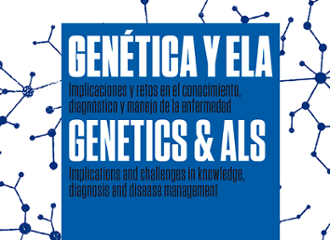Research projects
Start of main content
Caracterización multiómica de Escherichia coli verotoxigénico para el diagnóstico clínico del Síndrome Hemolítico Urémico en la infancia y monitorización integrada de la granja al paciente.
22st national competition for scientific and technical research
Infection: early warning, prevention and treatment
Senior Researcher : Marina Oviaño García
Abstract
The Hemolytic Uremic Syndrome caused by verotoxigenic Escherichia coli is a disease characterized by microangiopathic hemolytic anemia, acute kidney damage, and thrombocytopenia, primarily affecting children under 5 years of age. The mortality rate is around 5%, although long-term sequelae appear in 30% of affected individuals, making it the leading cause of kidney failure in children in the European Union. In Spain, it has been established as a mandatory reporting disease since 2015. However, despite efforts, it remains an underdiagnosed infection, with fatal consequences in childhood. The aim of this project is the multi-omic characterization of verotoxigenic E. coli for the early detection of this bacterium and to establish prevention and support measures for patients in the event of possible development of Hemolytic Uremic Syndrome. Additionally, the potential link between clinical isolates and their origin in the veterinary industry will be studied, allowing us to establish alert systems for the infection and prevent outbreaks of this bacterium. To achieve this, we will rely on omics tools (genomics, proteomics, lipidomics, and infrared spectroscopy), and for data analysis, we will use predictive models based on artificial intelligence algorithms, integrating all obtained data with a 360º approach. The results of this project will enable the development of an online application that will alert in the presence of an STEC with an associated probability.
-
 Activities related
Activities related
-
 Projects related
Projects related
-
 News related
News related
-
 Publications related
Publications related
 Activities related
Activities related
-
26
Jun
2024
Conferencias La aventura de la ciencia Madrid, Miércoles 26 de junio de 2024, 19:00 horas
-
13
Feb
2025
17th edition. Cycle of conferences and debates in science Digital Twins: Technological Advances and Application Opportunities Madrid, Thursday, 13 February 2025, 17:30 hours
-
18
Feb
2025
Session New Therapies for the Inflammation Treatment Madrid, Feb 18th, 2025, Tuesday. 4PM
 Projects related
Projects related
- Development and Application of saRNAs for the Treatment of Rare Monogenic Diseases 2024 Senior Researcher : María Luisa Cayuela Fuentes
- CHANNELOSOME RESCUING PEPTIDES IN THE TREATMENT OF ARRHYTHMIAS IN INHERITABLE HEART DISEASES 2024 Senior Researcher : José Jalife Research Centre or Institution : Centro Nacional de Investigaciones Cardiovasculares (CNIC). Madrid
- Mechanisms for sustaining mitochondrial genome integrity and function during hematopoiesis. 2024 Senior Researcher : Ana Victoria Lechuga Vieco Research Centre or Institution : Fundació Clínic per a la Recerca Biomèdica. Hospital Clínic. Barcelona
 News related
News related
 Publications related
Publications related


End of main content



